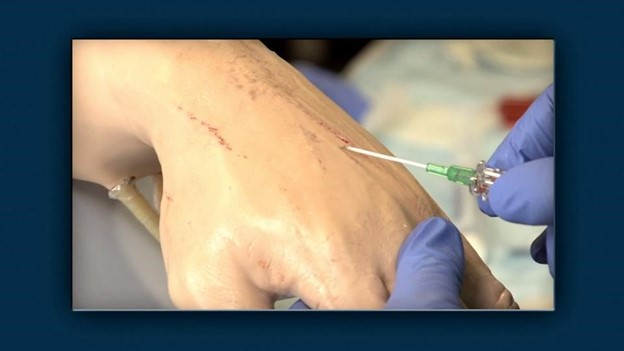A nurse is administering furosemide IV bolus to a client who has fluid volume excess.
The nurse should recognize which of the following findings as an indication that the medication has been effective?
Weight loss.
Decreased inflammation.
Increased blood pressure.
Decreased pain.
The Correct Answer is A
The correct answer is A.
Weight loss.
Furosemide is a loop diuretic that is used to treat fluid volume excess by increasing the excretion of water and electrolytes through the kidneys. Weight loss is an indication that the medication has been effective in reducing the excess fluid in the body.
Choice B is wrong because decreased inflammation is not a direct effect of furosemide.
Inflammation is a response to tissue injury or infection, and furosemide does not have any anti-inflammatory properties.
Choice C is wrong because increased blood pressure is not an indication of furosemide effectiveness.
Furosemide lowers blood pressure by reducing the preload and afterload on the heart.
Increased blood pressure may indicate that the dose of furosemide is insufficient or that there are other factors contributing to hypertension.
Choice D is wrong because decreased pain is not an expected outcome of furosemide therapy.
Furosemide does not have any analgesic effects, and pain may be caused by various conditions that are not related to fluid volume excess.
Normal ranges for weight, blood pressure and pain vary depending on the individual patient’s baseline and goals.
However, some general guidelines are:
- Weight: A weight loss of 0.5 to 1 kg per day is considered safe and effective for patients with fluid volume excess.
- Blood pressure: The target blood pressure for most patients with heart failure is less than 130/80 mmHg.
- Pain: The pain level should be assessed using a valid and reliable scale, such as the numeric rating scale or the visual analogue scale, and treated according to the patient’s preference and tolerance.
Nursing Test Bank
Naxlex Comprehensive Predictor Exams
Related Questions
Correct Answer is D
Explanation
Choice A reason:
"I try to respond to the baby quickly so she doesn't cry very long." This statement is incorrect because it indicates the parent's sensitivity to the baby's needs and responsiveness to the baby's cues, which are positive signs of appropriate caregiving.
Choice B reason:
"I have several friends who come by to help out with the baby." This statement is incorrect because having a support system in the form of friends who help with the baby is a positive factor that can reduce stress and promote a healthy postpartum period.
Choice C reason:
"I want to meet other parents to see if they are going through the same things." This statement is incorrect because seeking social support and connecting with other parents can be beneficial in reducing feelings of isolation and stress during the postpartum period.
Choice D reason:
"I think the baby should be sleeping through the night by now is the correct statement "I think the baby should be sleeping through the night by now," as a manifestation of increased risk for child abuse. This statement may indicate unrealistic expectations or frustration from the parent regarding the baby's sleep patterns.
It is common for newborns to wake frequently during the night for feeding and care, and their sleep patterns can vary significantly in the early weeks and months of life. Unrealistic expectations or frustration about the baby's sleep habits can contribute to increased stress for the parent, which might increase the risk of child abuse or neglect.
Correct Answer is D
Explanation

This is because after puncturing the skin and the vein, the nurse needs to advance the catheter into the vein with the finger hub to ensure proper placement and prevent complications such as infiltration or phlebitis.
Choice A is wrong because flushing the catheter with saline should be done after securing the catheter to the skin with a transparent dressing and attaching a primed piece of extension tubing to the catheter.
Choice B is wrong because retracting the stylet should be done after advancing the catheter into the vein and releasing the tourniquet from the client’s arm.
Choice C is wrong because releasing the tourniquet should be done after advancing the catheter into the vein and before retracting the stylet.
Whether you are a student looking to ace your exams or a practicing nurse seeking to enhance your expertise , our nursing education contents will empower you with the confidence and competence to make a difference in the lives of patients and become a respected leader in the healthcare field.
Visit Naxlex, invest in your future and unlock endless possibilities with our unparalleled nursing education contents today
Report Wrong Answer on the Current Question
Do you disagree with the answer? If yes, what is your expected answer? Explain.
Kindly be descriptive with the issue you are facing.
